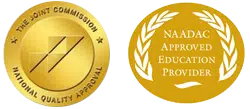Millions of Americans struggle each year with drug abuse, known as Substance Abuse Disorder (SAD), and thousands each year enter treatment programs. If you’re concerned about your own drug use, or that of a loved one, you aren’t alone. Help and treatment is available to you at Baystate Recovery Center, and your journey to sobriety can start with learning more about drug abuse.
What is Drug Abuse?
Drug abuse, or SAD, is a medically recognized disorder that describes a pattern of substance use that impacts the person’s life, causing significant problems or distress. It can lead to issues with work or school or may even cause the user to put themselves in dangerous situations when using. Drug abuse also damages relationships with family and friends.
Drug abuse can include using illegal substances or abusing prescription drugs, including alcohol. In fact, alcohol is the most common legal drug of abuse.
When Does Drug Abuse Become Addiction?
Drug abuse can often lead to addiction, a compulsive and uncontrollable craving for their drug of choice. Many addicts will continue to seek and use their drug of choice even if they experience negative consequences of the drug use.
The National Institute on Drug Abuse (NIDA) characterizes drug addiction as a chronic and relapsing disorder that is characterized by:
- Compulsive seeking of the drug of choice
- Continuing to use the drug despite the negative consequences of use
- Long-lasting changes to the brain and brain chemistry
Addiction affects people both mentally and physically and often requires professional help to treat it.
What are the Symptoms of Drug Abuse and Addiction?
Many people share common outward expressions of addiction, including consistent impaired behavior. Those in active addiction may be unable to quit on their own. Other signs of addiction include:
- Increased frequency of drug use, in spite of attempts to control use
- Longer time using or recovering from using drugs
- Continuing to use despite persisting problems
- Narrowing their focus on rewards linked to addiction
- Inability to address their addiction or problems
- Inability to abstain from use
The state of addiction continues despite the lack of rewards. Over time, the brain’s chemistry changes, and new neural pathways are formed. The brain craves the drug, and its natural reward circuitry is changed. Instead of producing natural hormones like dopamine and serotonin, mood regulators, the brain instead relies on the artificial chemical rewards from the drug or alcohol.
What are Common Treatments For Drug Addiction?
Drug addiction begins with detoxing the body. Some people may require medication to help the detoxification process. Once the individual is physically clean, then the work of understanding what led to the drug abuse begins. This can include group and individual therapy, such as Cognitive Behavioral Therapy (CBT).
Understanding how relapse happens, and steps to work through cravings and triggers, is another part of treatment. People learn strategies to help avoid triggers and situations that can cause them to relapse.
Do You Need Drug Abuse Rehabilitation?
If you need help or are struggling with drug addiction, Baystate Recovery Center can help. We offer intensive Outpatient treatment and approach addiction treatment holistically, helping people work through underlying trauma or other issues that may have led to their drug addiction. We also offer relapse prevention resources and strategies, plus therapy for families, to help you mend relationships. Call us today for a confidential assessment and to discuss your options.
Baystate Recovery Center, a clinically Infused 12-Step Treatment Center for Drug and Alcohol Addiction, was founded by two partners in addiction treatment services, John Checchi and Michael Wilson.



